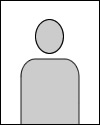Clinical experience with an offline adaptive radiation therapy head and neck program: Dosimetric benefits and opportunities for patient selection Journal Article
| Authors: | Aristophanous, M.; Aliotta, E.; Lichtenwalner, P.; Abraham, S.; Nehmeh, M.; Caringi, A.; Zhang, P.; Hu, Y. C.; Zhang, P.; Cervino, L.; Gelblum, D.; McBride, S.; Riaz, N.; Chen, L.; Yu, Y.; Zakeri, K.; Lee, N. |
| Article Title: | Clinical experience with an offline adaptive radiation therapy head and neck program: Dosimetric benefits and opportunities for patient selection |
| Abstract: | Purpose: The objective of this study was to develop a linear accelerator (LINAC)-based adaptive radiation therapy (ART) workflow for the head and neck that is informed by automated image tracking to identify major anatomic changes warranting adaptation. In this study, we report our initial clinical experience with the program and an investigation into potential trigger signals for ART. Methods and Materials: Offline ART was systematically performed on patients receiving radiation therapy for head and neck cancer on C-arm LINACs. Adaptations were performed at a single time point during treatment with resimulation approximately 3 weeks into treatment. Throughout treatment, all patients were tracked using an automated image tracking system called the Automated Watchdog for Adaptive Radiotherapy Environment (AWARE). AWARE measures volumetric changes in gross tumor volumes (GTVs) and selected normal tissues via cone beam computed tomography scans and deformable registration. The benefit of ART was determined by comparing adaptive plan dosimetry and normal tissue complication probabilities against the initial plans recalculated on resimulation computed tomography scans. Dosimetric differences were then correlated with AWARE–measured volume changes to identify patient-specific triggers for ART. Candidate trigger variables were evaluated using receiver operator characteristic analysis. Results: In total, 46 patients received ART in this study. Among these patients, we observed a significant decrease in dose to the submandibular glands (mean ± standard deviation: −219.2 ± 291.2 cGy, P < 10−5), parotids (−68.2 ± 197.7 cGy, P = .001), and oral cavity (−238.7 ± 206.7 cGy, P < 10−5) with the adaptive plan. Normal tissue complication probabilities for xerostomia computed from mean parotid doses also decreased significantly with the adaptive plans (P = .008). We also observed systematic intratreatment volume reductions (ΔV) for GTVs and normal tissues. Candidate triggers were identified that predicted significant improvement with ART, including parotid ΔV = 7%, neck ΔV = 2%, and nodal GTV ΔV = 29%. Conclusions: Systematic offline head and neck ART was successfully deployed on conventional LINACs and reduced doses to critical salivary structures and the oral cavity. Automated cone beam computed tomography tracking provided information regarding anatomic changes that may aid patient-specific triggering for ART. © 2024 Elsevier Inc. |
| Keywords: | adult; controlled study; aged; middle aged; major clinical study; patient selection; cancer patient; cancer radiotherapy; cancer staging; nuclear magnetic resonance imaging; computer assisted tomography; tumor volume; radiotherapy dosage; radiotherapy; diagnostic imaging; automation; histology; radiation response; head and neck cancer; computerized tomography; head and neck neoplasms; tumor burden; dosimetry; radiotherapy planning, computer-assisted; observational study; normal tissue; head and neck; parotid gland; head and neck tumor; tissue; cone beam computed tomography; mouth cavity; volumetric modulated arc therapy; gross tumor volume; cone-beam computed tomography; demographics; image guided radiotherapy; organ; procedures; linear accelerators; workflow; clinical experience; dose volume histogram; organs at risk; submandibular gland; adaptive radiotherapy; adaptive radiation therapy; planning target volume; adaptive radiation therapies; radiotherapy, image-guided; humans; human; male; female; article; radiotherapy planning system; computed tomography scan; anatomic changes; offline |
| Journal Title: | International Journal of Radiation Oncology, Biology, Physics |
| Volume: | 119 |
| Issue: | 5 |
| ISSN: | 0360-3016 |
| Publisher: | Elsevier Inc. |
| Date Published: | 2024-08-01 |
| Start Page: | 1557 |
| End Page: | 1568 |
| Language: | English |
| DOI: | 10.1016/j.ijrobp.2024.02.016 |
| PUBMED: | 38373657 |
| PROVIDER: | scopus |
| PMCID: | PMC11636647 |
| DOI/URL: | |
| Notes: | The MSK Cancer Center Support Grant (P30 CA008748) is acknowledge in the PDF -- Corresponding authors is MSK author: Michalis Aristophanous -- Source: Scopus |
Altmetric
Citation Impact
BMJ Impact Analytics
MSK Authors
Related MSK Work
















